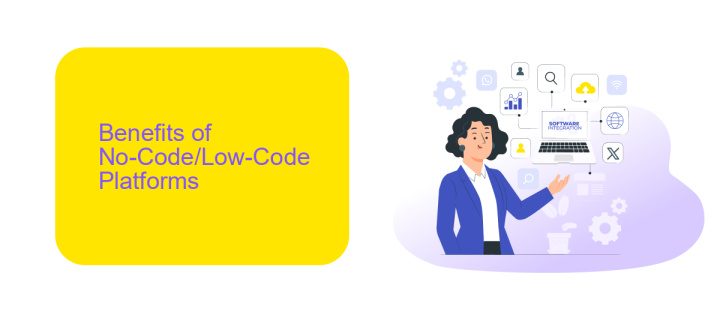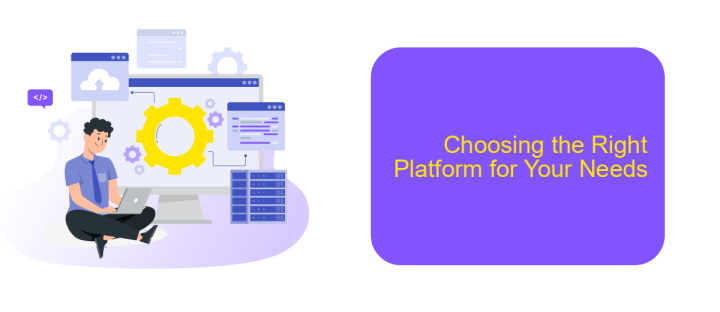Top No-Code Low-Code Platforms
In today's fast-paced digital landscape, the demand for rapid application development has never been higher. No-code and low-code platforms are revolutionizing the way businesses and individuals create software, enabling even those without extensive coding knowledge to build functional and scalable applications. This article explores the top no-code and low-code platforms that are empowering users to innovate and streamline their workflows efficiently.
Introduction
In today's fast-paced digital world, the demand for rapid application development has never been higher. Traditional coding methods often require significant time and expertise, which can be a barrier for many businesses. This is where no-code and low-code platforms come into play. These platforms empower users to build applications quickly and efficiently without the need for extensive coding knowledge.
- No-code platforms: Allow users to create applications using visual interfaces and drag-and-drop tools.
- Low-code platforms: Provide a balance between visual development and coding, offering more flexibility for customization.
- Integration tools: Services like ApiX-Drive simplify the process of connecting different applications and automating workflows.
By leveraging no-code and low-code platforms, businesses can accelerate their digital transformation, reduce development costs, and enable non-technical staff to contribute to application development. Whether you're a small business owner or part of a large enterprise, these platforms offer a scalable solution to meet your unique needs. Embrace the future of application development with the power and versatility of no-code and low-code platforms.
Benefits of No-Code/Low-Code Platforms

No-code and low-code platforms offer significant benefits for businesses and developers alike. One of the primary advantages is the accelerated development process, which allows for quicker prototyping and deployment of applications. This speed is particularly beneficial for startups and small businesses that need to bring their products to market rapidly. Additionally, these platforms reduce the dependency on highly skilled developers, making it easier for non-technical team members to contribute to the development process. This democratization of software development fosters innovation and collaboration within organizations.
Another key benefit is the ease of integration with other services and systems. Platforms like ApiX-Drive facilitate seamless integration, allowing businesses to connect various applications without extensive coding. This capability is crucial for maintaining efficient workflows and ensuring data consistency across different platforms. Moreover, no-code and low-code solutions often come with built-in security features and compliance measures, reducing the risk of vulnerabilities and ensuring that applications meet industry standards. Overall, these platforms provide a cost-effective, flexible, and secure way to develop and manage applications, empowering businesses to focus on their core objectives.
Top No-Code / Low-Code Platform Comparison

Choosing the right no-code or low-code platform can significantly impact your project's success. These platforms enable users to build applications with minimal coding, offering a range of features and integrations.
- Bubble: Known for its powerful visual editor and extensive plugin ecosystem.
- OutSystems: Offers robust enterprise-level capabilities with advanced integration options.
- ApiX-Drive: Specializes in seamless integrations, allowing easy data transfer between various apps and services.
- Appgyver: Provides a comprehensive toolkit for building mobile and web applications.
- Adalo: Ideal for creating mobile apps with intuitive drag-and-drop features.
Each platform has its unique strengths, catering to different needs. For instance, ApiX-Drive excels in setting up integrations effortlessly, making it a valuable tool for automating workflows. Evaluate your requirements and choose a platform that aligns with your project's goals and technical needs.
Choosing the Right Platform for Your Needs

Choosing the right no-code or low-code platform can significantly impact your project's success. It's essential to consider your specific needs, technical skills, and long-term goals before making a decision. Start by evaluating the complexity of your project and the functionalities you require.
Next, think about the scalability of the platform. Will it be able to grow with your business? Assess the ease of use and the learning curve associated with the platform. Some platforms offer extensive tutorials and community support, which can be invaluable for beginners.
- Evaluate the platform's integration capabilities. For instance, ApiX-Drive offers seamless integration with various services, making data synchronization effortless.
- Consider the cost and pricing model. Ensure it fits within your budget and offers good value for the features provided.
- Check user reviews and case studies to see how the platform has performed for businesses similar to yours.
By carefully considering these factors, you can choose a platform that not only meets your current needs but also supports your future growth. Remember, the right platform can streamline your workflow, enhance productivity, and drive innovation.


Future of No-Code/Low-Code Development
The future of no-code/low-code development is poised to revolutionize the way businesses and individuals create software applications. As technology continues to evolve, these platforms will become even more intuitive and powerful, enabling users with little to no programming knowledge to build sophisticated solutions. The growing demand for rapid digital transformation and the shortage of skilled developers are driving the adoption of no-code/low-code tools, making it easier for organizations to innovate and stay competitive.
Moreover, the integration capabilities of no-code/low-code platforms are expected to expand significantly. Services like ApiX-Drive will play a crucial role in this evolution by providing seamless integration between various applications and systems. This will allow users to automate workflows, synchronize data, and enhance productivity without the need for complex coding. As these platforms continue to mature, we can anticipate a future where the barriers to software development are significantly lowered, democratizing access to technology and fostering a new wave of creativity and efficiency.
FAQ
What are No-Code and Low-Code platforms?
Who can benefit from using No-Code and Low-Code platforms?
What types of applications can be built with No-Code and Low-Code platforms?
How do No-Code platforms handle integrations with other software?
What is the main advantage of using a service like ApiX-Drive for automation and integration?
Do you want to achieve your goals in business, career and life faster and better? Do it with ApiX-Drive – a tool that will remove a significant part of the routine from workflows and free up additional time to achieve your goals. Test the capabilities of Apix-Drive for free – see for yourself the effectiveness of the tool.

